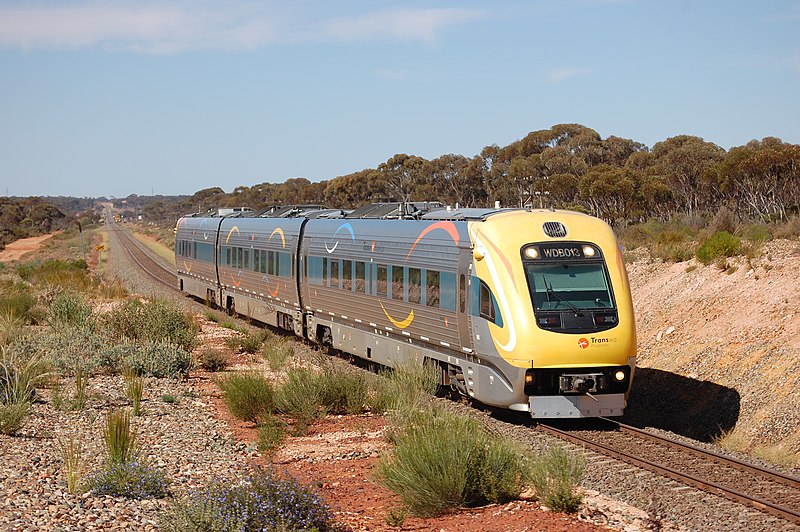It would not be connected to any commuter network, though parts of it duplicate the New York commuter system. Rather, it would be Connecticut's part of a regional passenger rail network covering all of New England, as well as offering regular--hourly--intercity service.
Built from the framework of the now-defunct New Haven Connecticut network (the only non-NH line in all of CT, prior to Conrail, was the Central Vermont's line to New London in one of the state's most sparsely populated sections), this network is designed as a 2x4 grid. More routes access denser western Connecticut, while fewer routes reach its more rural eastern half.
The Lines
- The Inland Trunkline, NH's predecessor railroad New York & New England's mainline, runs from Poughkeepsie to Woonsocket. It would here link to Providence via RRI's Blackstone Valley Line and Boston via the MBTA's Franklin Line*.
- The Along the Shore Line, the former New Haven mainline and current Northeast Corridor mainline, runs from New York to Westerly en route to Boston**.
- The Housatonic Valley Line runs from New York, diverging from Along the Shore at Norwalk, crossing the Inland Trunk at Danbury, and on up the eponymous river valley between the Taconics and Berkshires to North Canaan en route to Pittsfield and North Adams***.
- The Naugatuck Valley Line runs from New Haven to Winsted via Bridgeport, Waterbury, and and the Housatonic's tributary, the Naugatuck. Alone of all of these lines, it does not have any connection at its northern end^.
- The (Lower) Connecticut Valley Line runs from New Haven to Springfield via Hartford. It is a core service already offered by Amtrak and funded by CT DOT. Key scheduling improvements center around ensuring hourly clockface and excellent connections.
- The Quinebaug Valley Line is named for the Thames River tributary it follows for most of its length. Located in relatively rural eastern Connecticut, it runs from New London to Worcester^^.
Just one of these lines is electrified; only two will require dual-mode locomotion. The majority of service will concentrate around DMUs, like UGL Limited's elegant Prospector model (top), Class 222 (above) the Stadler GTW (below), Siemens Desiro (bottom), or some other example (like Bombardier's Talent).
Such equipment would be used throughout the wider New England system, forming the fleet backbone; over time, each route would become electrified, until EMUs can provide most of the service. This would happen in an order of progression from higher-volume routes to lower-volume ones.
As New England is a collection of small states whose regional-level rail would need to be unified, Connecticut regional rail can be expected to be no more than a part of the overall system. To see the whole, then, requires understanding this project's connections to Rhode Island and Massachusetts systems.
___________
*At Woonsocket, it would connect to Rail Rhode Island's Blackstone Valley Line; it would also connect to an extension of the MBTA's Franklin Line to its natural terminus (i.e. Woonsocket). The section between Putnam and Blackstone would supersede RRI's Putnam Branch, which brings the alignment up the Woonasquatucket back into play--especially if the alignment can be reclaimed to Webster.
**The New Haven Line and Shore Line East currently inhabit this alignment. In fact, Shore Line East offers part of a convenient operations nucleus to build the network around, even if (as commuter services) it would be turned over to MNRR. Along the Shore would also need the least resources of any of these lines, principally filling in Northeast Regional service gaps (if any) and ensuring an MNRR-RRI connection at Westerly.
***From North Canaan to North Adams is Massachusetts' purview. North Canaan itself is a pretty poor terminus. The line itself would duplicate MNRR commuter/regional service to New Milford (extended from the current terminus at Danbury).
^This line duplicates MNRR from Bridgeport to Waterbury.
^^Incidentally, this also allows me to cut RRI's own Thames Valley Line back from Norwich to Plainfield.







There was a discussion some years ago about reopening the line from Danbury to Pittsfield to passenger service (it already takes freight), but I assume it amounted to nothing:
ReplyDeletehttp://www.rep-am.com/articles/2010/06/12/news/local/488858.txt
Pittsfield is certainly a better terminus than the hamlet of North Canaan, but the main advantage is that the road connections from Fairfield County to Berkshire County are very limited, with no N-S limited access highway running through Western Connecticut (credit for that goes to Wilton, CT, for holding the line, Spartan-like, against the extension of Route 7 to Danbury). Pittsfield itself is not directly served by the Interstate system at all, much less North Adams.
I agree.
DeleteI mentioned in the post that the Housatonic Valley Line is supposed to directly connect with an extension up to Pittsfield and North Adams. My vision (and a stalled Google Maps project), though, is that the section between North Canaan and North Adams be run by MA; the basic idea is that regional higher-speed rail throughout New England would be unified; but that certain responsibilities for the physical plant itself would devolve to the states. So North Canaan is a tiny hamlet, but also, since Pittsfield is nowhere near the state border, a good point of interchange between physical plants.